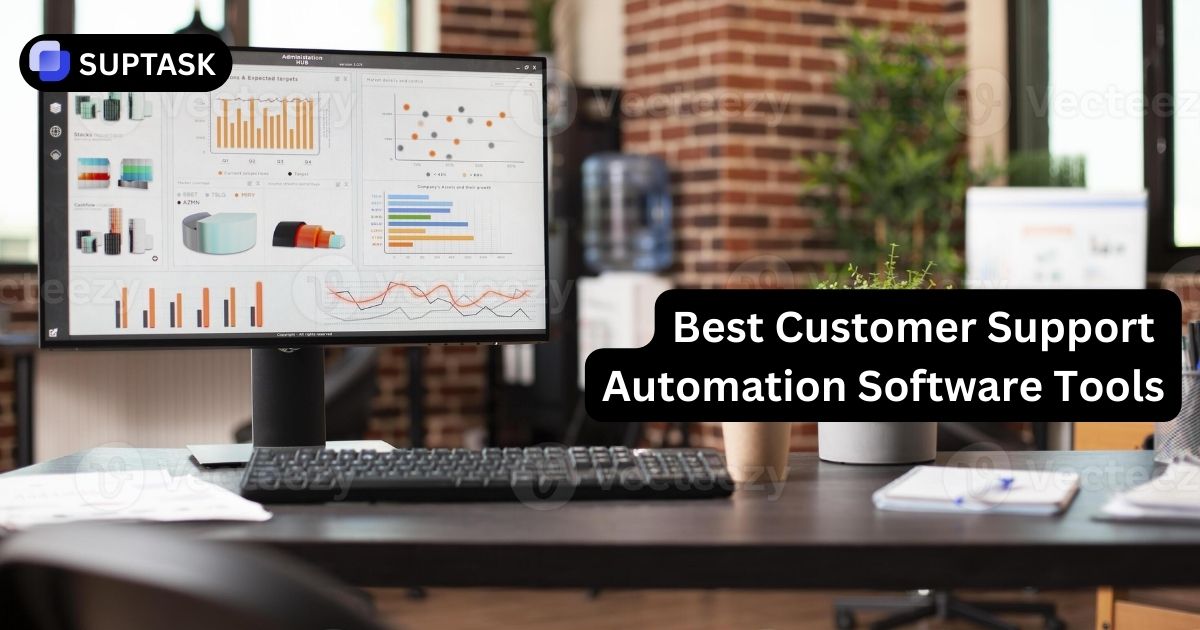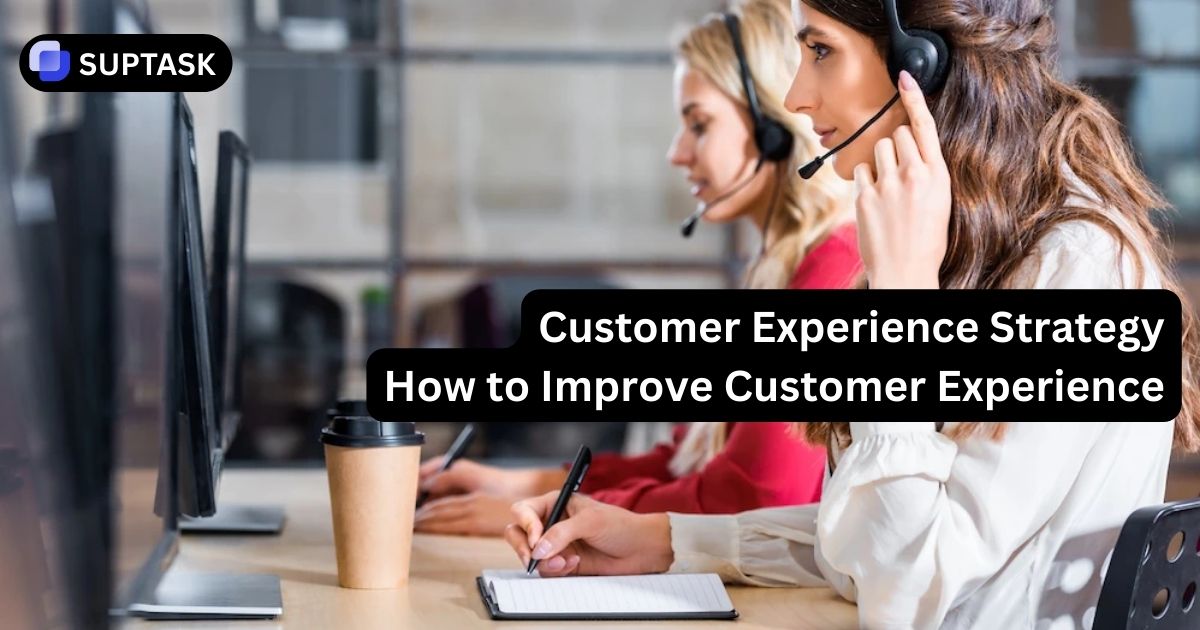Have you ever found yourself trapped on a never-ending call with customer support, endlessly redirected from one agent to another in search of a solution?
It's an incredibly frustrating experience, but there is hope! Implementing a well-structured and efficient help desk support system can prevent this customer service nightmare.
At the heart of such a system lies Tier 2 support - the crucial level of expertise that bridges the gap between basic troubleshooting and highly specialized solutions.
In this blog post, we will explore the world of Tier 2 help desk support, diving into its role, benefits, and strategies for building a solid Tier 2 support team that ensures maximum customer satisfaction.
Key Takeaways
- Tier 2 Help Desk Support offers advanced technical and hardware assistance to ensure smooth and efficient operations.
- The support agents in Tier 2 bring with them a wealth of expertise, problem-solving capabilities, interpersonal skills, and resourcefulness. This allows them to effectively address and resolve intricate and challenging issues.
- To enhance the customer experience, organizations should meticulously choose qualified individuals for their Tier 2 team and encourage the adoption of self-service tools.
Defining Tier 2 Help Desk Support
.webp)
In the field of IT support, Tier 2 represents the third level of support tiers. It handles more complex issues that cannot be resolved by Tier 1 and occasionally escalates them to Tier 3. While Tier 1 support deals with basic customer inquiries and provides simple technical assistance, Tier 2 delves into more intricate problems that demand a higher level of expertise and technical knowledge.
Tier 2 support agents are responsible for:
- Providing comprehensive troubleshooting and backend support
- Tackling complex desktop problems
- Resolving routing and network issues
- Offering general server support
Their advanced technical skills allow them to identify quickly and solve problems that Tier 1 technicians cannot handle, ensuring that customers are highly satisfied.
Key Characteristics of Tier 2 Support
Tier 2 support agents differentiate themselves from other support tiers through their specialized expertise and comprehensive technical knowledge. They possess the following qualities:
- Advanced knowledge of systems and applications
- Ability to tackle complex issues escalated from Tier 1 support
- Strong problem-solving skills
- Effective knowledge sharing capabilities
- Exceptional interpersonal skills
In certain situations, Tier 2 agents may also work together with external service providers to effectively resolve various technical issues. This demonstrates their ability to adapt and find innovative solutions.
Common Issues Handled by Tier 2 Support
Tier 2 support agents are responsible for addressing a range of advanced technical problems, including software and hardware difficulties. They handle backend support tasks and occasionally work with external technical support when needed.
Their role goes beyond the basic troubleshooting provided by Tier 1 support, as they tackle more complex hardware issues such as diagnosing and fixing hardware-related problems, troubleshooting intricate technical matters, and performing hardware updates.
By addressing these intricate problems, Tier 2 support agents can ensure seamless operations and minimize downtime, benefiting both users and businesses.
What Are The 5 Help Desk Tiers and Their Job Descriptions

A well-structured service desk infrastructure consists of five support tiers, each with distinct roles, responsibilities, and skill sets. This tiered system aims to improve both customer and employee experiences, optimize the time of help desk agents, and enable self-service capabilities.
The successful functioning of a help desk team relies heavily on proper organization and the use of appropriate support technology. One crucial aspect is having a defined escalation process that allows tickets to be sorted based on complexity, ensuring that each issue is handled by the most suitable support tier. This tiered system, when complemented with effective support technology, enables agents to operate efficiently and provide efficient resolution for all customer concerns.
Help Desk Tier 0
At Tier 0, also known as the self-service level, customers are given the tools and resources to address their concerns independently, with minimal need for direct interaction with employees. This level utilizes a range of technologies, including self-service portals, chatbots, and AI-powered helpdesk automation tools. These tools empower customers to access information and resolve their issues without requiring assistance from a human representative.
By providing essential resources and tools, Tier 0 support enhances efficiency and reduces response times. This, in turn, alleviates the workload of higher support tiers.
Help Desk Tier 1
Tier 1 help desk support is the first point of contact for customers, providing initial assistance and resolving basic inquiries. The technicians at this level have the following abilities:
- Customer service aptitude
- Technical support expertise
- Phone call handling proficiency
- Problem-solving acumen
Tier 1 technicians are instrumental in maintaining customer satisfaction by promptly and courteously providing support and escalating unresolved customer tickets to Tier 2 for further assistance.
Help Desk Tier 2
As we mentioned earlier, Tier 2 support offers more specialized technical assistance and can handle complicated issues that Tier 1 support cannot resolve. The technicians in Tier 2 have the required expertise and experience to accurately diagnose problems and provide effective solutions that demand a higher level of knowledge.
Tier 2 support agents need more than just technical skills. They must also possess excellent communication and customer service abilities to provide a positive customer experience.
Help Desk Tier 3
Tier 3 represents the pinnacle of IT support, manned by seasoned product engineers and developers who possess the skills to tackle even the most intricate technical challenges. These experts take charge of crafting, upkeeping, and rectifying problems related to crucial application and system elements. Additionally, they actively contribute to the creation of cutting-edge software and hotfixes.
Tier 3 support agents possess advanced technical expertise, allowing them to efficiently and effectively resolve even the most difficult issues.
Help Desk Tier 4
Tier 4 support provides external assistance for products that are not internally supported by the organization. This can include outsourced hardware and software. While Tier 4 support offers the same services as Tiers 0-3, it operates outside of the regular IT support structure and often involves seeking help from external technical experts.
With Tier 4 support, organizations can have complete IT coverage and support, even if they lack internal resources or face limitations. This level of support is specifically designed to handle outsourced products and ensure that all of an organization's IT needs are met.
Tier 2 Help Desk Examples
To gain a better understanding of Tier 2 help desk support, let's look at a few real-life scenarios. Picture a customer who continues to experience trouble with a help desk software application, even after following the basic troubleshooting steps provided by Tier 1 support.
This issue is escalated to Tier 2 support, where an experienced technician familiar with the software identifies a more intricate problem and offers a solution. This prompt action ensures the customer's problem is swiftly resolved.
In another scenario, a user experiences network connectivity issues that persist after exhausting all troubleshooting options offered by Tier 1 support. Tier 2 support diagnoses the problem, discovering that it stems from a misconfigured router.
The Tier 2 technician works alongside the user to reconfigure the router and restore network connectivity, demonstrating their ability to handle more complex technical issues and their commitment to providing a positive customer experience.
Building a Strong Tier 2 Help Desk Team
Building a strong Tier 2 support team is vital for the overall effectiveness of a help desk support system. It is essential to carefully choose candidates who possess the necessary qualifications, experience, and skills. This ensures that the Tier 2 support agents are capable of resolving intricate problems and delivering outstanding customer service.
In addition, providing ongoing training and development opportunities can help support agents stay up-to-date with the latest technologies and help desk best practices, further enhancing their ability to address customer issues effectively.
In the upcoming sections, we will delve into effective approaches for recruiting, training, and cultivating a capable Tier 2 support team.
Hiring Criteria for Tier 2 Support Agents
- Comprehensive technical knowledge
- Adept at diagnosing and resolving complex hardware, software, and network equipment issues
- Exceptional communication and customer service capabilities
- Ability to work both autonomously and collaboratively
By emphasizing these crucial skills and qualifications, organizations can assemble a Tier 2 support team that is fully prepared to tackle the demands of their position while also delivering exceptional customer satisfaction.
Try Suptask free version, our tool integrate with other services like Slack, to improve your customer support and service.
Training and Development for Tier 2 Support
To stay up-to-date with industry advancements and best practices, it is crucial for Tier 2 support agents to engage in continuing education and skills development. Some recommended training programs include:
- Technical skills development
- Product and system knowledge
- Communication and customer service skills
- Ticket management and prioritization
- Collaboration and knowledge sharing
- Focus on continuous learning
Additionally, certifications like CompTIA A+, HDI Support Center Analyst (HDI-SCA), ITIL Foundation, and CompTIA Network+ can offer valuable knowledge and credentials for Tier 2 support agents.
Maximizing Customer Satisfaction with Tier 2 Support
.webp)
There are several strategies that can greatly enhance the customer experience with Tier 2 support. These include improving communication, collaboration, and performance monitoring.
- Fostering teamwork and knowledge sharing between Tier 1 and Tier 2 support agents
- Ensuring a smooth escalation process for issues
- Swift resolution of customer issues
By incorporating these strategies, organizations can enhance customer satisfaction and deliver a more streamlined and productive support experience for their customers.
Furthermore, organizations can enhance their Tier 2 support processes and identify areas for improvement by tracking key performance indicators and metrics. By delving deeper into these strategies, they can maximize customer satisfaction with Tier 2 support.
Communication and Collaboration Between Tiers
Encouraging communication and collaboration between Tier 1 and Tier 2 support agents is essential for efficient help desk operations.
By sharing expertise and knowledge, Tier 2 support agents can help Tier 1 agents grow in their roles, while also learning from the experiences and insights of their colleagues.
Working collaboratively as a team efficiently addresses customer concerns, resulting in higher customer satisfaction. It also fosters a strong and united technical support team that can effectively handle even the most complex technical issues.
Monitoring and Measuring Tier 2 Performance
Monitoring and measuring the performance of a Tier 2 help desk team can provide valuable insights into the effectiveness of their support processes. Key performance indicators and metrics such as:
- Ticket volume
- First-contact resolution rate
- Average response time
- Customer satisfaction (CSAT)
These tools can be utilized to evaluate the effectiveness of Tier 2 support agents and pinpoint areas that need improvement.
Organizations can maintain a consistent level of customer satisfaction and meet their performance goals by regularly tracking these metrics within their Tier 2 support team.
Integrating Tier 2 Support with Managed Services
Many organizations find that outsourcing Tier 2 support to a managed service provider (MSP) offers numerous benefits. These include cost savings, optimization of resources, and the ability to tap into specialized expertise.
This approach can be especially advantageous for organizations that do not have the internal resources or expertise needed to effectively handle complex technical issues.
In the upcoming sections, we will examine the benefits of outsourcing Tier 2 support and offer advice on how to choose the appropriate MSP for your organization.
Advantages of Outsourcing Tier 2 Support
Outsourcing Tier 2 support can provide the following benefits:
- Significant cost efficiencies and resource optimization
- Access to specialized expertise that may not be available in-house
- Reduced customer support costs
- Enhanced customer experience
- Ability to focus on core business activities
By leveraging the skills and knowledge of an MSP, organizations can achieve these advantages.
Additionally, outsourcing Tier 2 support can provide scalability, allowing organizations to adjust their support resources to meet changing demands.
Selecting the Right MSP for Your Organization
When selecting an MSP for Tier 2 support, it’s essential to consider factors such as:
- Skillset and expertise
- Track record
- Alignment with your organization’s needs
- Professionalism and service class
- Industry expertise and experience
- Proactive and dependable support
- Cybersecurity capabilities
- Scalability
By carefully assessing potential Managed Service Providers (MSPs) using these criteria, organizations can confidently select a provider that is capable of effectively addressing their Tier 2 support requirements and enhancing the overall customer experience.
Implementing a Self-Service Portal to Complement Tier 2 Support
A self-service portal can significantly improve customer support by providing a valuable resource for customers and relieving the workload of Tier 2 support agents.
Benefits of a self-service portal include:
- Providing a centralized platform for users to access information
- Resolving common issues independently
- Enhancing the efficiency of support processes
- Delivering a more satisfying customer experience.
In the upcoming sections, we will explore the characteristics of a self-service portal that promotes effectiveness. Additionally, we will provide suggestions on encouraging users to utilize self-service tools.
Features of an Effective Self-Service Portal
A user-friendly self-service portal should have a simple navigation system, with easily understandable menus and search functions that enable users to find the information they need efficiently.
To provide users with the necessary resources to resolve their issues independently, a comprehensive help desk knowledge base can be created. This knowledge base would include frequently asked questions (FAQs), helpful how-to videos, and step-by-step guides.
Furthermore, it is crucial to prioritize the mobile-friendliness of the portal to deliver a seamless user experience on various devices.
Encouraging User Adoption of Self-Service Tools
Encouraging the use of self-service resources can alleviate the burden on Tier 2 support agents and enhance overall customer satisfaction. Organizations can promote user adoption of these tools through various approaches, such as:
- Raising awareness via targeted marketing campaigns
- Providing training and onboarding materials
- Integrating the portal with other systems
- Continuously gathering user feedback for ongoing improvements.
By promoting the use of self-service resources, organizations can improve the customer experience and streamline their help desk support processes for maximum efficiency.













